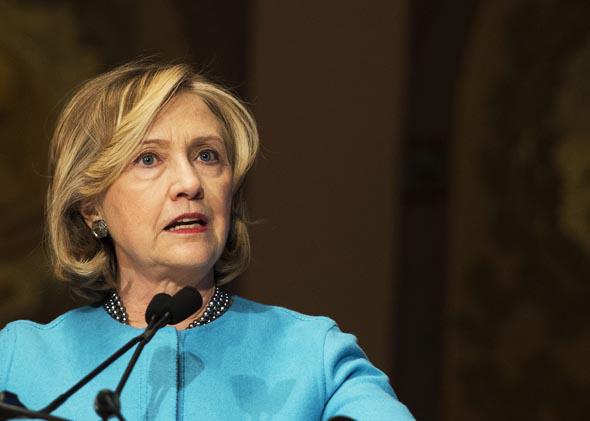The most immediate consequence of the Democrats’ midterm disaster was losing control of the Senate and ceding Congress to the GOP. For the next two years, Democrats will have to deal with conservative legislation, right-wing hijinks, and—in all odds—a vacancy crisis, as Republicans freeze confirmations and refuse to fill spots in the executive branch and on the federal bench.
That is bad for the Democratic Party. What’s on the horizon is worse. As Amy Walter notes for the Cook Political Report, Democrats lost big at all levels of government, including the states. “Today,” she writes, “about 55 percent of all state legislative seats in the country are held by Republicans. That’s the largest share of GOP state legislators since the 1920s.” What’s more, “just 11 states have an all Democratic-controlled legislature,” and Democrats hold single-party control in just seven states. By contrast, “Republicans have a legislative majority in 30 states, including the battleground states of Florida, Ohio, Pennsylvania, and North Carolina,” and single-party control in most of the South.
This, Walter says, is a slow-moving disaster for congressional Democrats. She’s right. Absent major gains in 2016, 2018, and 2020, Democrats will be shut out of the next round of redistricting. If, she writes, “Democrats can’t get a seat at the redistricting table in 2020, they may find themselves locked out of a congressional majority for another 10 years.” And even if they do get a seat at the table, argues Greg Sargent for the Washington Post, there’s still the problem of population distribution; even in blue states, most Democratic voters are crammed in a handful of urban areas, which dilutes their strength in House elections. Sargent quotes David Wasserman (also of the Cook Political Report): “If Democrats were to get neutral maps drawn by God in all 50 states, they would still fall well short of winning back the House,” says Wasserman. “What Democrats really need is a massive resettlement program.”
With that said, there are more costs to Democratic weakness in the states than just House elections. States are where parties build talent and try new ideas. Here, the GOP is instructive. Its brightest stars are either governors (Scott Walker, John Kasich, and Chris Christie) or former state officeholders (Marco Rubio, Ted Cruz, and Joni Ernst). And Republican-controlled statehouses have been incubators for conservative ideas, from experiments in tax cutting (Bobby Jindal’s Louisiana and Sam Brownback’s Kansas) to full-fledged assaults on public-sector unions (Walker’s Wisconsin and Christie’s New Jersey). In all likelihood, the next Republican president will either come from the states, or will borrow his approach from the present generation of GOP governors. Likewise, if Democrats win the White House for a third term, they’ll face opposition from Congress and empowered Republican majorities at the state level. Indeed, if not for statehouse Republicans, the Affordable Care Act would be a smoother project, with broader buy-in for exchanges and the Medicaid expansion.
Democrats might have strong national prospects in the form of Hillary Clinton, but they have little to look to in the states. Only a few places stand as incubators for progressive strategies and ideas, and nationwide, Democrats have close to nothing in the way of a bench for federal and statewide office. The liberal counterparts to Walker, Christie, Brownback, and Mike Pence—ideologically motivated governors with national profiles—don’t exist. And as a result, liberals can’t point to a forward-looking agenda that exists outside the bounds of the presidency.
Worse, without a strong presence in the states, liberals lack a base for institutional pressure. Outside of Congress, there are few party voices pushing President Obama to the left, or urging a more liberal approach to key policy matters. And while part of this is just the nature of the game—parties try to maintain unity when they control the White House—part of it has to do with the lack of strong liberal voices (and strong liberal agendas) throughout the country. If you have your doubts, you just have to look at the field of presidential candidates for the 2016 Democratic primary who aren’t Clinton. At most—for viable, liberal alternatives outside of Congress—there’s outgoing Maryland Gov. Martin O’Malley. The rest are either sitting senators or moderate governors, like New York’s Andrew Cuomo.
Put simply, the two statewide Republican waves have put Democrats and liberals on the near-term defensive. The former will struggle to build a new bench for the post-Obama era, and the latter will fight to put effective pressure on a national party that—if it follows the lead of its likely nominee—isn’t eager to embrace the unapologetic liberalism of its activist class. And the honest truth is that things could get worse. With a sudden economic downturn, Democrats could enter 2016 as serious underdogs, giving Republicans a real chance to elevate new talent and give their statewide strategies a spin on the national stage.
